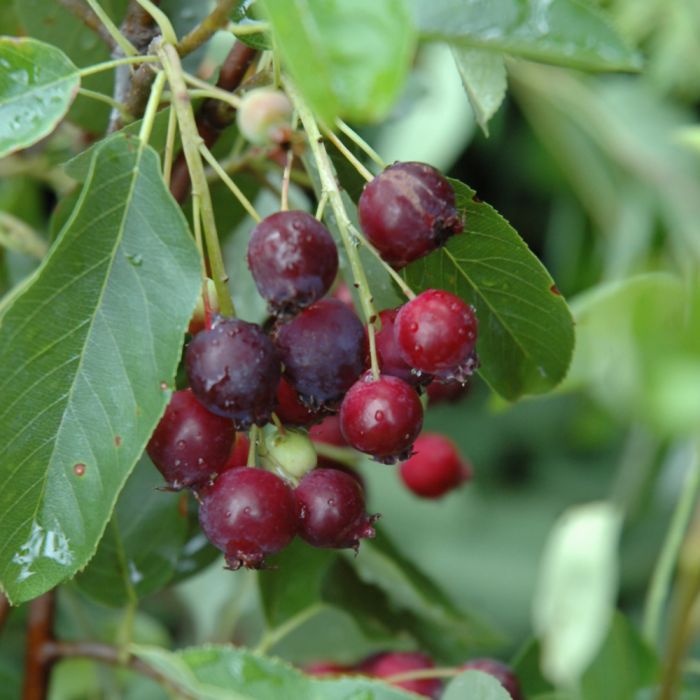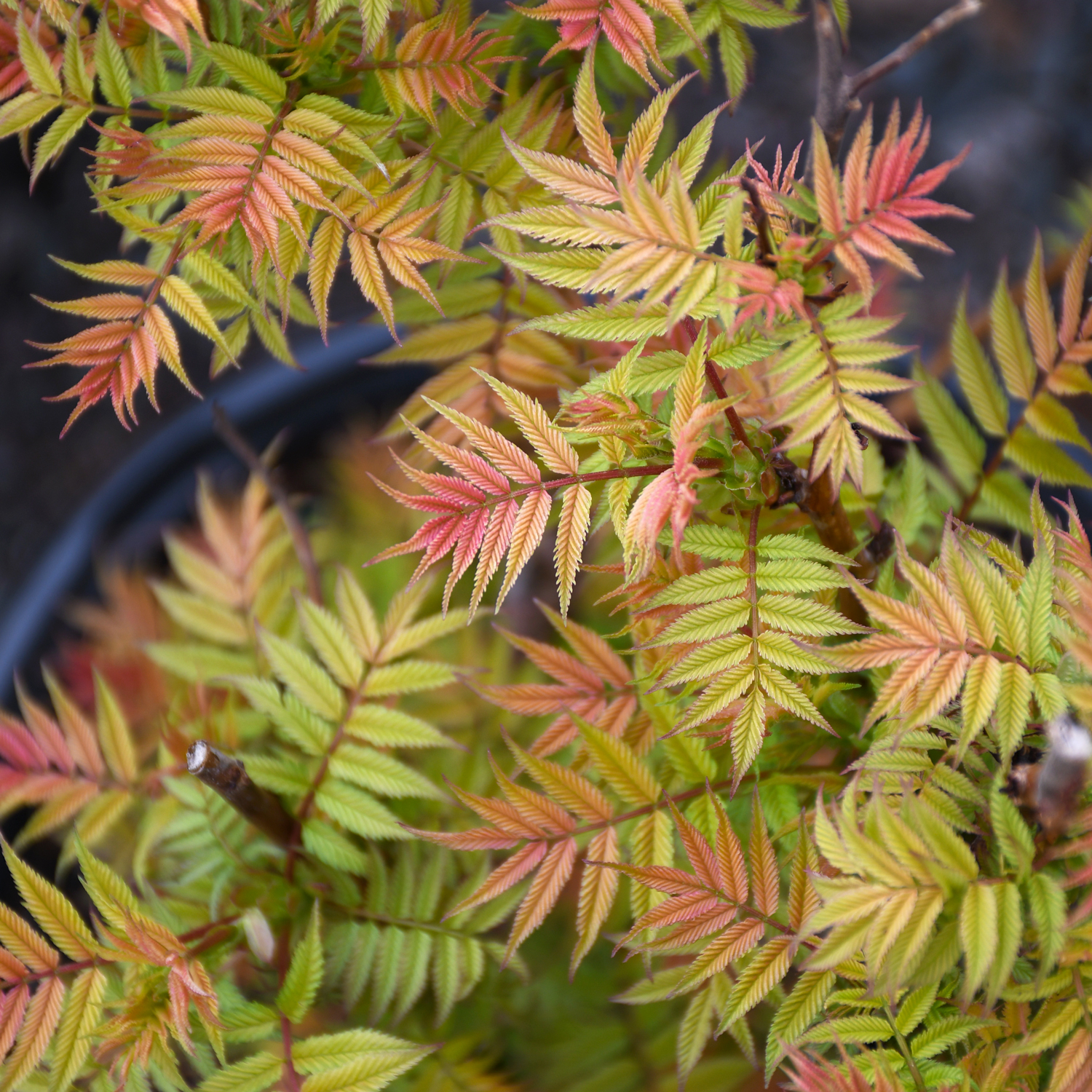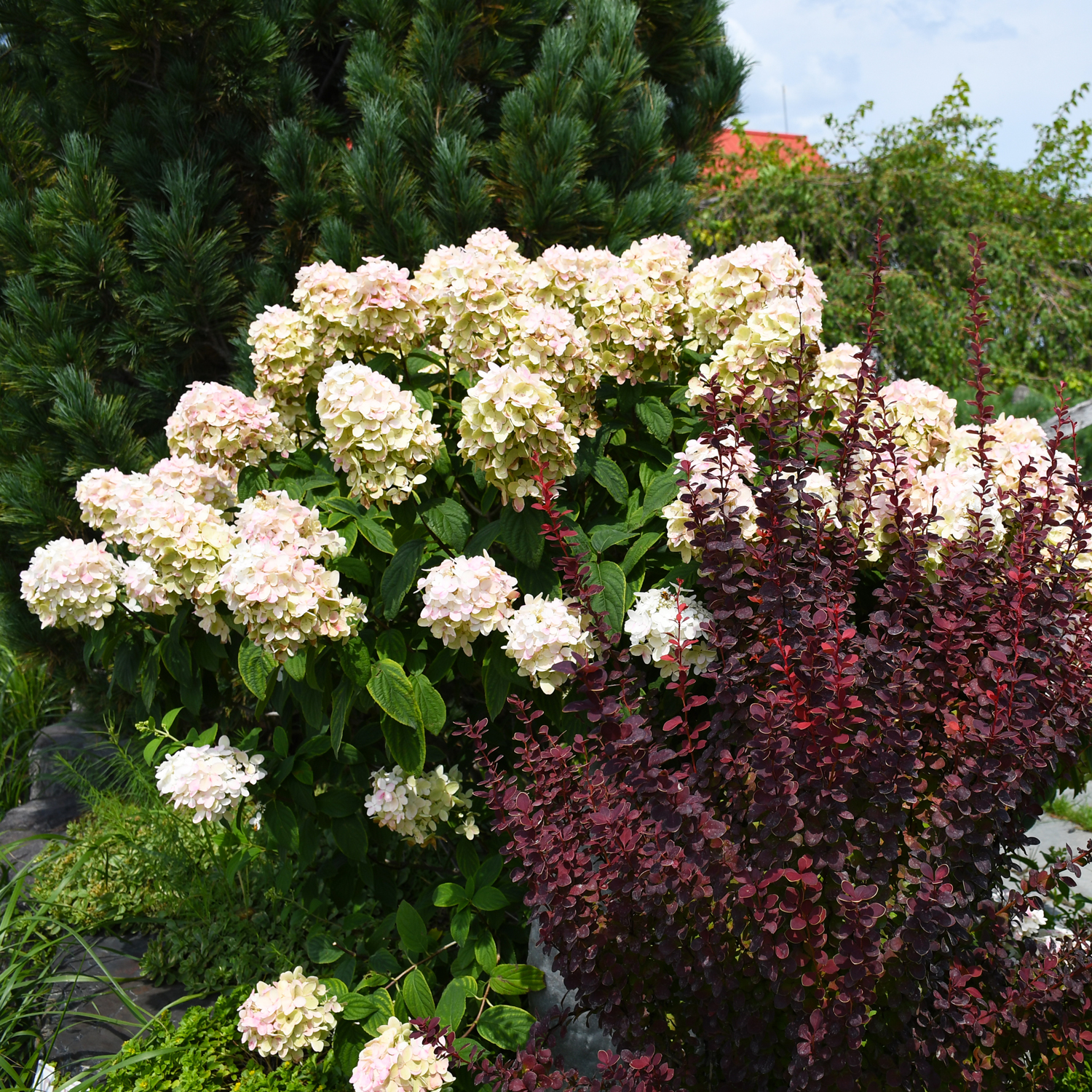Amelanchier, Serviceberry Shrub 'Regent'




- Sun Preference
- Full-Sun, Part-Sun
- Bloom Time
- April, May, June
Description
Regent Serviceberry | Amelanchier alnifolia 'Regent'
A compact, upright form of this valuable landscape shrub with showy white flowers in spring followed by delicious berries in June that are great for pies, jams and fresh eating; unique habit make this a fine choice for garden use or in hedgesMinnesota's Largest Selection of Shrubs
Elevate your landscaping with Gertens' unmatched variety of shrubs! Selecting the right shrubs for your backyard can enhance its beauty and functionality. Consider factors like sunlight, soil type, and mature size when choosing shrubs. For sunny areas, flowering shrubs like roses or hydrangeas can add color and charm. In shady spots, opt for shrubs like azaleas or hostas. Evergreen shrubs provide year-round interest and privacy, while deciduous shrubs offer seasonal color changes. At Gertens, we offer a wide selection of shrubs to suit every backyard need.
Details
Regent Serviceberry is a medium-sized shrub that is typically grown for its edible qualities, although it does have ornamental merits as well. It produces small blue round berries which are usually ready for picking in early summerin early summer. The berries have a sweet taste.
The berries are most often used in the following ways:
- Fresh Eating
- Cooking
- Baking
- Preserves
Regent Serviceberry is blanketed in stunning clusters of white flowers rising above the foliage from early to mid spring before the leaves. It has dark green deciduous foliage. The oval leaves turn an outstanding yellow in the fall. It features an abundance of magnificent blue berries in late spring.
This is a dense multi-stemmed deciduous shrub with an upright spreading habit of growth. Its relatively fine texture sets it apart from other landscape plants with less refined foliage. This is a relatively low maintenance plant, and is best pruned in late winter once the threat of extreme cold has passed. It is a good choice for attracting birds to your yard, but is not particularly attractive to deer who tend to leave it alone in favor of tastier treats. It has no significant negative characteristics.
Aside from its primary use as an edible, Regent Serviceberry is sutiable for the following landscape applications;
- Hedges/Screening
- General Garden Use
- Naturalizing And Woodland Gardens
- Orchard/Edible Landscaping
Regent Serviceberry will grow to be about 6 feet tall at maturity, with a spread of 6 feet. It has a low canopy, and is suitable for planting under power lines. It grows at a slow rate, and under ideal conditions can be expected to live for approximately 20 years. This is a self-pollinating variety, so it doesn't require a second plant nearby to set fruit.
This shrub is quite ornamental as well as edible, and is as much at home in a landscape or flower garden as it is in a designated edibles garden. It does best in full sun to partial shade. It prefers to grow in average to moist conditions, and shouldn't be allowed to dry out. It is not particular as to soil type or pH. It is somewhat tolerant of urban pollution. This is a selection of a native North American species.
More Information
| Gerten Grown Plants | Gerten Grown Plants |
|---|---|
| Bloom Time | April, May, June |
| Sun Preference | Full-Sun, Part-Sun |
| Mature Height (Range) | 5 - 10 feet |
| USDA Hardiness Zone | 2, 3, 4, 5, 6, 7 |
| Common Family Name | Serviceberry |


